Introduction
In the vast culinary landscape of Asia, steamed dishes occupy a prestigious position, celebrated for their simplicity, elegance, and ability to bring out the natural flavors of ingredients. Among these, steamed scallops with vermicelli (often referred to as “fan xie zheng yuan bei” in Chinese) stand out as a culinary gem, combining the delicate sweetness of fresh scallops with the soft, absorbing texture of vermicelli noodles. This dish is not only a delight for the taste buds but also a testament to the art of balance and harmony in cooking.
In this comprehensive guide, we will delve into the intricacies of preparing steamed scallops with vermicelli, from selecting the freshest ingredients to mastering the steaming technique. By the end, you will be equipped with the knowledge and skills to create a restaurant-quality dish right in your own kitchen.
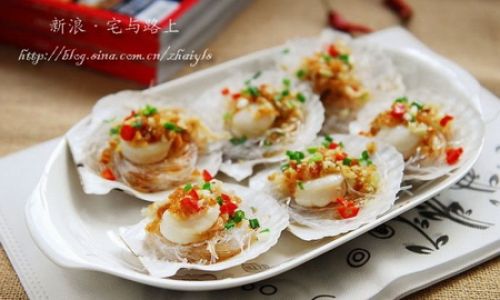
Chapter 1: Ingredient Selection
The success of any dish begins with the quality of its ingredients. When it comes to steamed scallops with vermicelli, the freshness of the scallops and the type of vermicelli used are paramount.
1 Scallops
Scallops, scientifically known as Pecten maximus, are a type of bivalve mollusk found in coastal waters worldwide. They are valued for their sweet, tender flesh and mild flavor. When choosing scallops for steaming:
- Freshness: Always opt for fresh, never frozen, scallops. Fresh scallops should have a moist, slightly translucent appearance and a pleasant, slightly sweet aroma. Avoid any that have a fishy odor or appear dry or slimy.
- Size: While personal preference plays a role, larger scallops tend to be more meaty and impressive on a plate. However, they also require longer cooking times.
- Preparation: Before cooking, rinse scallops gently under cold running water and pat them dry using paper towels. Remove any side muscles or beards attached to the scallops, as these can be gritty and unpleasant to eat.
2 Vermicelli
Vermicelli, derived from the Italian word “vermicelli” meaning “little worms,” refers to thin, string-like pasta noodles. In Asian cuisine, rice vermicelli (made from rice flour) is most commonly used for steaming dishes. When selecting vermicelli:
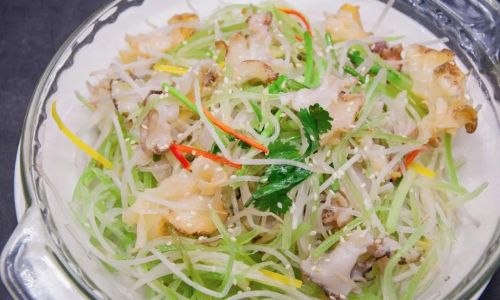
- Type: Rice vermicelli is the preferred choice for this dish due to its delicate texture and ability to absorb flavors. Avoid wheat-based vermicelli, which can become too dense and heavy when steamed.
- Thickness: Choose thin vermicelli noodles for optimal texture. Thicker noodles may take longer to cook and may not absorb flavors as well.
- Preparation: Before steaming, soak the vermicelli in hot water for about 10-15 minutes until they are pliable but not overly soft. Drain and rinse under cold water to prevent sticking.
Chapter 2: Seasoning and Garnishes
The beauty of steamed scallops with vermicelli lies in its ability to highlight the natural flavors of the ingredients while adding subtle layers of complexity through seasoning and garnishes.
1 Seasoning
- Soy Sauce: A staple in Asian cuisine, light soy sauce adds a savory, umami-rich flavor without overpowering the scallops. Dark soy sauce can be used for added color but should be used sparingly.
- Oyster Sauce: This thick, brown sauce made from oysters adds a rich, slightly sweet flavor that complements seafood dishes. Use it sparingly to avoid making the dish too salty.
- Sesame Oil: A few drops of toasted sesame oil can elevate the dish with its nutty, aromatic flavor.
- Sugar and Salt: A pinch of sugar helps balance the flavors, while salt enhances the overall taste.
- White Pepper: Freshly ground white pepper adds a hint of spice without overwhelming the dish.
2 Garnishes
- Green Onions: Finely chopped green onions add a fresh, slightly oniony flavor and a pop of color.
- Cilantro: For those who enjoy cilantro’s unique, slightly citrusy flavor, it can be a delightful garnish.
- Ginger: Thinly sliced ginger can be placed on top of the scallops to add a subtle, aromatic heat.
- Chili Sauce: For those who prefer a bit of spice, a drizzle of chili sauce can be served on the side.
Chapter 3: Preparation Techniques
Now that we have our ingredients, it’s time to dive into the preparation techniques that will ensure your steamed scallops with vermicelli are a culinary success.

1 Preparing the Vermicelli
- Soaking: Place the dried rice vermicelli in a large bowl and cover with hot water. Let it soak for about 10-15 minutes, stirring occasionally to prevent sticking.
- Draining and Rinsing: Once the vermicelli is pliable, drain it in a colander and rinse under cold water to stop the cooking process and prevent over-softening.
- Seasoning: In a bowl, toss the drained vermicelli with a little soy sauce, sesame oil, and a pinch of salt. This will help the noodles absorb flavor and prevent sticking during steaming.
2 Preparing the Scallops
- Marinating: In a small bowl, mix together a few tablespoons of soy sauce, a teaspoon of oyster sauce, a pinch of sugar, salt, and white pepper. Place the scallops in a shallow dish and pour the marinade over them. Let them marinate for at least 15 minutes, turning occasionally to ensure even coating.
- Arranging: Once the vermicelli is ready, place a small nest of noodles on each serving plate or steaming dish. Place a scallop on top of each nest, ensuring the scallop is slightly elevated to allow for even steaming.
Chapter 4: The Steaming Process
Steaming is a gentle cooking method that preserves the natural flavors, textures, and nutrients of food. Here’s how to steam your scallops and vermicelli perfectly:
1 Setting Up the Steamer
- Fill the Pot: Fill the bottom of your steamer pot with water, but do not let it touch the steaming rack. Bring the water to a boil over medium-high heat.
- Preheating: Place the steaming rack inside the pot and cover it with the lid. Allow the steamer to preheat for a few minutes.
2 Steaming the Dish
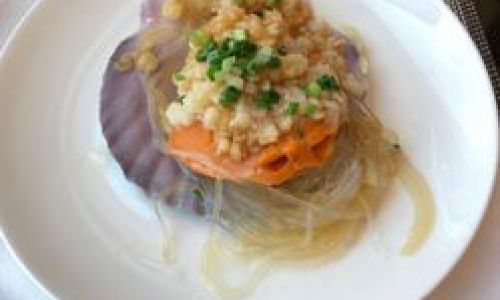
- Placing the Dishes: Carefully lift the preheated steaming rack and place the prepared scallop and vermicelli dishes on it. Ensure there is space between each dish to allow for even steaming.
- Covering and Steaming: Quickly cover the steamer with the lid to trap the steam. Steam for about 6-8 minutes, depending on the size of the scallops. The scallops should be opaque and slightly firm to the touch when done.
- Checking Doneness: Use a pair of chopsticks or a fork to gently lift a scallop to check for doneness. The flesh should be firm but tender, and the internal temperature should reach 145°F (63°C) for food safety.
Chapter 5: Finishing Touches and Serving
Once the scallops and vermicelli are steamed to perfection, it’s time to add the finishing touches and serve your dish.
1 Garnishing
- Sprinkle: Evenly distribute chopped green onions, cilantro, and thin slices of ginger over the top of each scallop and vermicelli nest.
- Drizzle: Add a few drops of toasted sesame oil over the top for added aroma and flavor.
2 Serving
- Plating: Serve the steamed scallops and vermicelli immediately while they are hot and steamy. Each serving should be presented on a small plate or steaming dish to maintain heat and presentation.
- Accompaniments: Serve with a side of chili sauce, soy sauce, or lemon wedges for those who prefer extra seasoning or a hint of brightness.
Chapter 6: Tips and Troubleshooting
Even the most seasoned cooks can encounter challenges when preparing steamed scallops with vermicelli. Here are some tips and troubleshooting techniques to ensure your dish is a success:
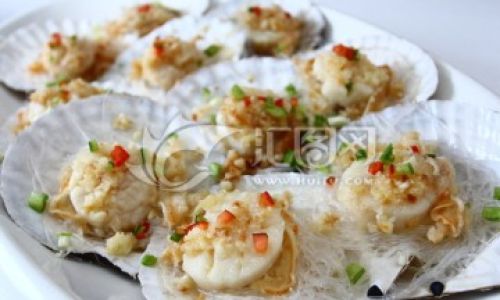
- Avoid Overcooking: Scallops can quickly become tough and rubbery if overcooked. Use a timer and check for doneness early.
- Prevent Sticking: Ensure the vermicelli is well-coated with oil and sauce to prevent sticking during steaming.
- Even Cooking: Arrange scallops and vermicelli in a single layer on the steaming rack to ensure even cooking.
- Steam Quality: Use a good-quality steamer to ensure consistent, even steam distribution.
- Storage: If you need to store leftover scallops and vermicelli, refrigerate them in an airtight container and consume within 24 hours. Reheat gently to avoid drying out the ingredients.
Conclusion
Steamed scallops with vermicelli is a dish that embodies the essence of Asian cuisine:
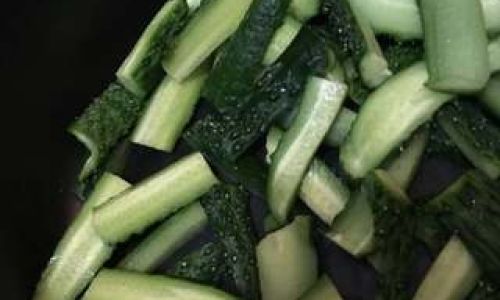
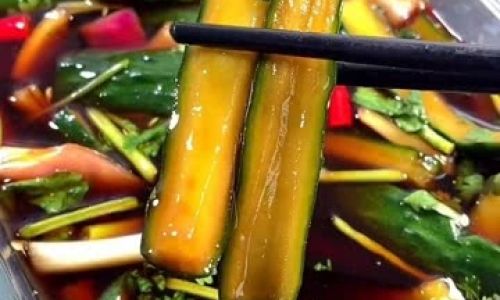
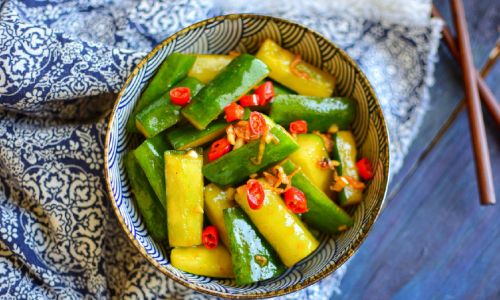
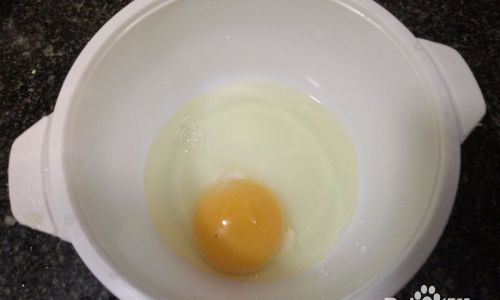

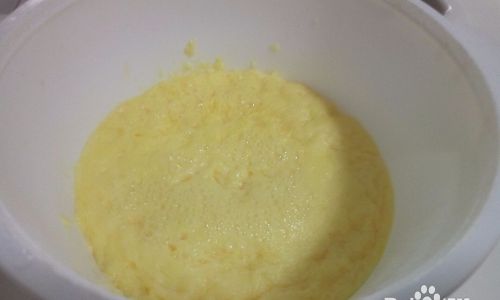
0 comments